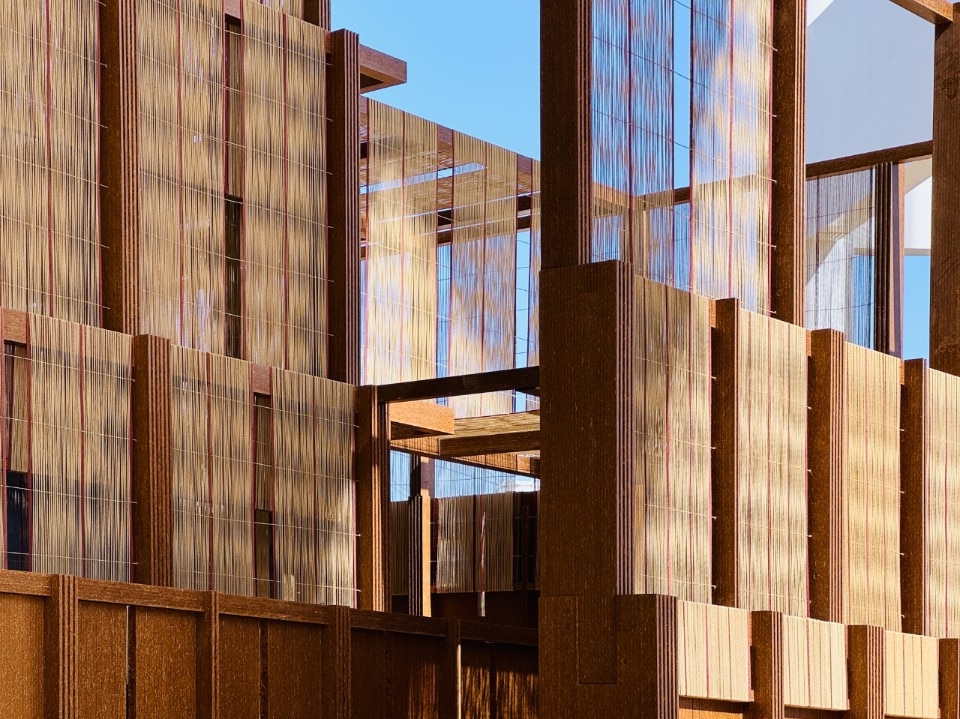Stationed within the exterior grounds of the second Islamic Arts Biennale in Jeddah is a modular structure that shoots up into the sky. Made from sustainable materials derived from local date palm waste, it resembles a giant loom onto which are dozens of earthy toned threads made from palm fronds and fibers.
The structure constitutes a modular Musalla, meaning a space for prayer and reflection, and is the inaugural winner of the first AlMusalla Prize by the Diriyah Biennale Foundation in Saudi Arabia, celebrating the legacy of Islamic Architecture. The winner went to the creators of this alluring edifice: a collective comprising Dubai and Beirut-based EAST Architecture Studio, structural engineer Christopher Blust from international engineering firm AKT II based the UK and Beirut and San Francisco-based artist Rayyane Tabet.
Titled “On Weaving,” the adaptable structure offers an exemplary study in craftsmanship, local heritage and natural materials. It is placed under the iconic canopied structures of the Western Hajj Terminal of the King Abdulaziz International Airport in Jeddah, the gateway for pilgrims to Mecca and Medina, and reimagines future spaces for worship that are uplifting, empowering and beautiful artistically and architecturally.

The structure is inspired by regional weaving traditions which exemplify notions of community and togetherness—aspects that immediately lured guests the opening week of the Islamic Arts Biennale. Visitors entered inside the structure’s open central courtyard and adjacent spaces and paused for a moment of contemplation or kneeled, bowing their head, to pray.
“We were inspired by traditional musallas, which are nomadic in nature and can be moved from one place to another in the desert,” explained Nicolas Fayad, co-founder of EAST Architecture Studio. Like the inspiration for its build, after the Biennale concludes on May 25 this year, it will be moved to another location, still to be determined.
“Our musalla unites local traditions of weaving to celebrate the region’s heritage with a place for prayer, union and quiet reflection,” added Fayad. The effect of the structure is immediately calming. While gaps in the translucent facades diffuse light, the wood-like build of the palm waste offers a sense of grounding.

All in all, the musalla, notes Fayad, has been made from the waste of 150 palm trees, demonstrating the ability to use local, natural materials to create long lasting and sustainable architecture.
The piece, while a work of architecture and design, is placed in the Biennale’s AlMidhallah section, which means “the canopy,” next to various contemporary works of art placed according to the idea of Islamic gardens. Such placement endows the musalla with versality and allows it to become itself also a work of art. This is exactly what Fayad, and his collaborators desired to show: how weaving, through its ability to bridge, hold together various parts of a whole, becomes itself architecture, design and a work of art.




















